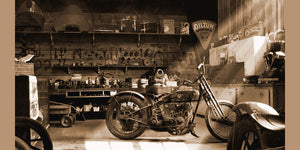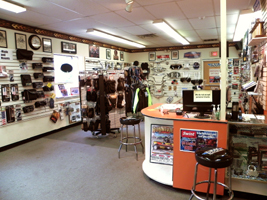Your Go-To Motorbike Shop for Quality Parts and Accessories
Your Go-To Motorbike Shop for Quality Parts and Accessories
Blog Article
Mastering Motorcycle Gears: How to Maximize Your Riding Experience
In the realm of motorcycling, mastering the art of gear adjustment is vital for enhancing your riding performance. Properly comprehending and making use of motorcycle gears can dramatically affect acceleration, control, and gas performance, changing an ordinary experience right into a seamless, electrifying journey. By incorporating precise shift timing and adapting equipment choice to numerous road conditions, motorcyclists can guarantee optimum engine performance and security. The subtleties of clutch control, throttle control, and equipment technicians beckon a deeper exploration, promising to open the full potential of your equipment. Exactly how can these techniques be utilized to really optimize your riding experience?
Understanding Gear Mechanics
At the core of motorcycle dynamics, equipment technicians play a crucial role in transforming engine power into movement, inevitably dictating speed and control. The equipment ratios, carefully designed, figure out the relationship in between engine transformations and wheel turns, influencing velocity and gas performance.
Comprehending gear mechanics starts with identifying the importance of the gearbox, which houses numerous equipments of varying dimensions. These equipments connect via a process called meshing, where teeth of various equipments involve to transfer power. The accuracy of this communication is important; any imbalance or damages can bring about inefficient power transfer, impeding efficiency. Additionally, the setup and dimension of gears affect the motorcycle's capability to manage different tons and speeds.
In addition, the idea of equipment moving is essential to making the most of performance. Timely and smooth changes ensure that the engine runs within its optimum power band, avoiding unneeded pressure and enhancing durability (mx parts nz). By comprehending these mechanical intricacies, riders can attain an unified blend of power, performance, and control, elevating their riding experience
Timing Your Changes
Shift timing proficiency is important for enhancing motorbike efficiency and enhancing the riding experience. Effectively timed shifts guarantee that the engine runs within its ideal power band, which is crucial for preserving control, achieving smooth acceleration, and making sure the durability of the motorbike. Riders should establish an intuitive sense of when to change gears, which includes recognizing the relationship in between engine changes per minute (RPM) and rate.
To understand change timing, pay close attention to the engine's sound and feel, as these provide important clues concerning when to transform equipments. When the engine comes close to the top array of its power band without reaching the redline, the perfect change factor commonly happens - motorcycle shop. Shifting prematurely can lead to a lack of power, while shifting also late may create unnecessary engine stress
Furthermore, roadway problems and riding design impact change timing. For circumstances, in city setups, smoother and extra regular shifts may be necessary to navigate website traffic successfully. In contrast, during highway riding, less shifts at higher speeds can be more suitable. Exercising in varied settings will certainly improve your ability to time changes precisely, inevitably raising your riding experience to an expert degree.
Enhancing Fuel Effectiveness
While grasping motorbike equipments is important for performance, boosting gas efficiency is just as vital for both environmental and financial reasons. Optimal fuel usage not only my site lowers functional expenses but likewise lessens the ecological footprint of riding. To attain this, one have to understand the complex connection in between gear choice and engine efficiency.
Firstly, selecting the ideal equipment at ideal rates can considerably influence gas usage. Riding in a higher gear at reduced speeds can lead to engine carrying, which is detrimental to both fuel economic situation and engine health. On the other hand, riding in reduced equipments at broadband leads to unnecessary fuel consumption. Thus, preserving an optimal balance by changing gears abreast with roadway problems and anticipated maneuvers is vital.
Furthermore, routine maintenance plays a crucial duty in gas effectiveness. Guaranteeing that the bike is well-tuned, with clean air filters and effectively inflated tires, can reduce and boost the rules of aerodynamics gas waste. In addition, taking on a riding style that embraces progressive velocity and smooth slowdown can add to far better gas economic climate.

Strategies for Smooth Transitions
Accomplishing smooth equipment changes is basic to boosting the riding experience and making sure the long life of a bike's transmission system. Correct gear changing not just adds to a seamless adventure yet likewise reduces wear and tear on the mechanical parts. To master the art of smooth shifts, cyclists must concentrate on click to read more a couple of vital methods.

Secondly, clutch control plays a pivotal duty. Engaging and disengaging the clutch smoothly requires technique. The clutch lever ought to be released slowly, permitting a smooth transfer of power from the engine to the wheels without causing a jolt or sudden motion.

Adapting to Roadway Problems
Navigating varied road problems is an essential ability for any motorcyclist aiming to keep control and security. Whether you're riding on wet surface areas, crushed rock roadways, or navigating doglegs, your capacity to adjust your gear usage and riding method is extremely important. Understanding how to readjust your gears suitably can substantially impact traction and security, ensuring a safer trip.
On damp roadways, it is suggested to keep greater gears to minimize torque and decrease wheel spin. This technique aids preserve grasp on slippery surfaces, enabling for smoother acceleration and deceleration. On the other hand, when riding on gravel or irregular Read More Here terrain, reduced equipments are more effective. Reduced equipments offer better control and allow you to respond more promptly to unanticipated adjustments in the road surface area.
Sharp contours demand specific equipment monitoring to stabilize rate and control. Downshifting prior to getting in a contour can help maintain energy while ensuring the bike continues to be stable throughout the turn. Constant practice in diverse conditions enhances your capability to respond and forecast to modifications in roadway structure and incline.
Final Thought
Mastering bike equipments considerably boosts the riding experience by improving velocity, gas, and control efficiency. Adjusting equipment option to numerous road problems, such as using higher gears on wet surface areas and reduced equipments on crushed rock, further improves handling and safety.
Understanding equipment mechanics starts with recognizing the value of the gearbox, which houses numerous equipments of differing sizes. These equipments communicate with a procedure recognized as meshing, where teeth of various equipments involve to transfer power (motox parts nz). Gentle modifications to the throttle during gear changes can protect against jerky movements and keep a regular riding speed
Whether you're riding on wet surfaces, gravel roadways, or navigating sharp turns, your capability to adapt your equipment use and riding method is critical. Adjusting gear selection to different roadway conditions, such as utilizing higher gears on wet surfaces and reduced gears on crushed rock, more improves handling and safety and security.
Report this page